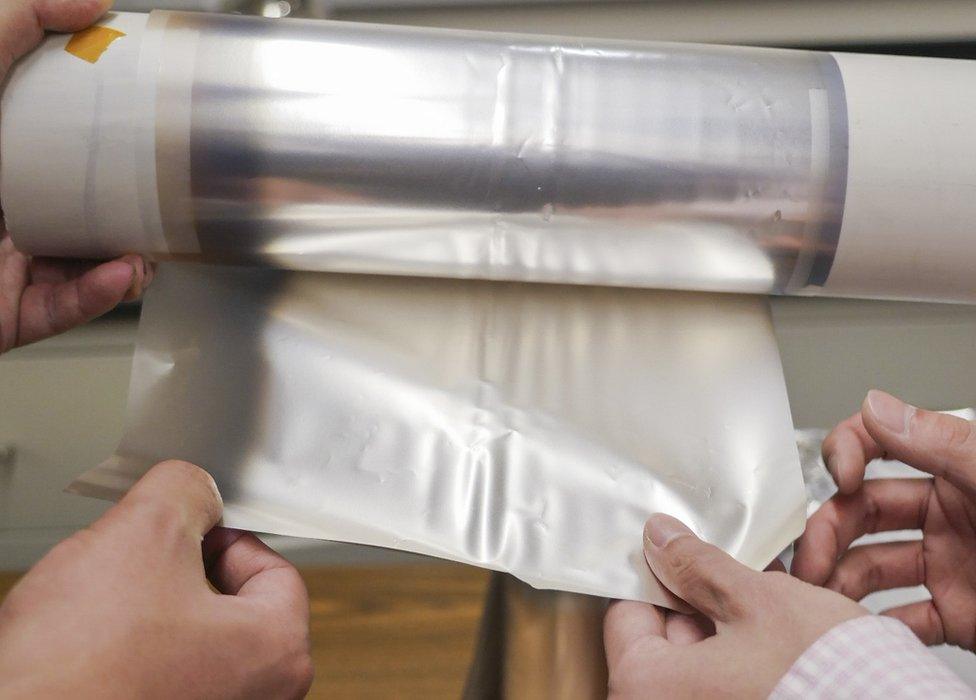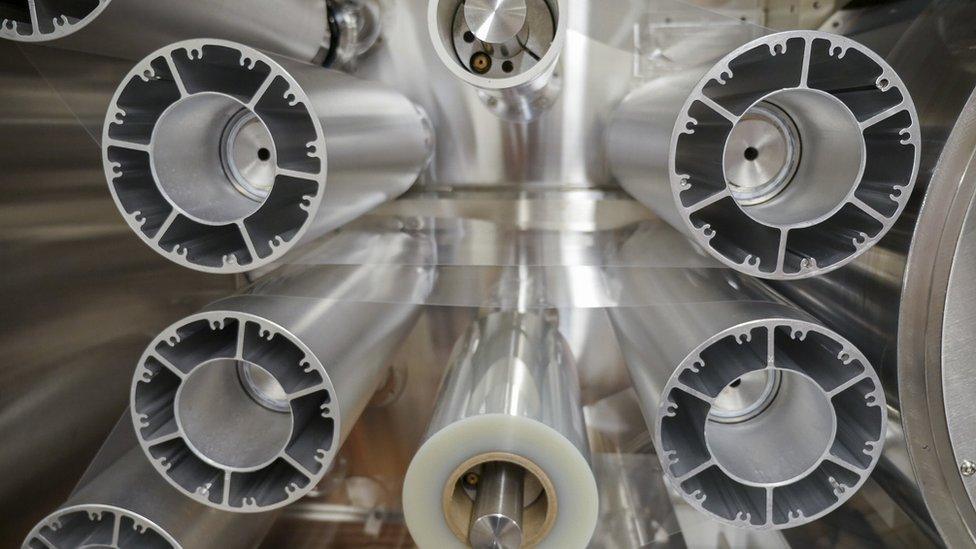Climate change: Low cost, low energy cooling system shows promise
- Published

The roof array that can cool a house with little energy use
Researchers in the US have scaled up a new low-cost system that could provide efficient cooling for homes while using very little electricity.
The team has developed a roof-top sized array, built from a highly reflective material made from glass and polymers.
In tests, the system kept water around 10C cooler than the ambient air when exposed to midday sunlight in summer.
The approach could also be scaled up to cool power stations and data centres.
The system is based around what's termed a cooling meta-material, which is essentially an engineered film not found in nature.
Last year, researchers at CU Boulder in the US published research on the extraordinary properties of the new film, which reflects back almost all incoming light from the Sun.
But it also has another cooling trick that makes it quite special. If you use the film to cover water, it allows any heat in the liquid to escape into the air.
So when the heat escapes and is not replaced because the material deflects away sunlight, temperatures drop rapidly.
Now the scientists have improved the system and and built and tested a 13-sq-metre array of panels, that's small enough to fit on most rooftops.
"You could place these panels on the roof of a single-family home and satisfy its cooling requirements," said Dongliang Zhao, lead author of the study from CU Boulder's Department of Mechanical Engineering.
How effective is this material?

The new material looks like aluminium foil but is slightly thicker
The system has been tested outdoors in a variety of weather conditions. In experiments carried out in the summer of 2017, the reflective system kept a container of water some 12C cooler than the surrounding air in the warmest hours of the day.
"We can now apply these materials on building rooftops, and even build large-scale water cooling systems with significant advantages over the conventional air-conditioning systems, which require high amounts of electricity to function," said Associate Professor Gang Tan, another author of the study from the University of Wyoming.
What makes it work?
The key material is made with glass microspheres embedded into a polymer film, with a thin silver coating.
At just 50 micrometres, it is slightly thicker than aluminium foil.
Another big advantage of the material is that it can be manufactured on rolls, making it easier to apply on residential and commercial applications.
What is it likely to be used for?

The film can be manufactured cheaply say the authors
The authors say that one of the most effective uses of the new material would be to cool thermoelectric power generating plants. These installations use large amounts of water and electricity to maintain the operating temperatures of their machinery. Using the new material could make them more efficient.
How much cooling does the world need?
In 2016 around 10% of the world's energy use went to power air conditioning. The International Energy Agency says that this rate is set to triple by 2050, with air conditioning (AC) consuming as much electricity as is used in China today.
As well as all the CO2 that is produced as electricity is created to power these devices, AC units also contain potent greenhouse gases in the form of hydrofluorocarbons.
HFCs were introduced to protect the ozone layer, because the previous generation of the cooling chemicals exacerbated the hole over Antarctica that had developed in the 1980s.
While HFCs are less damaging, they have a large global warming potential. In 2016, countries agreed that they would be phased out over the course of the next 15-20 years. If this happens successfully it could have a significant impact on limiting future temperature rises.
The new study has been published, external in the journal Joule.